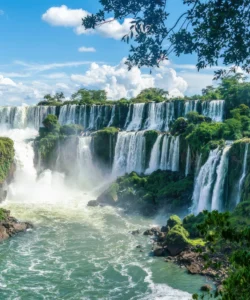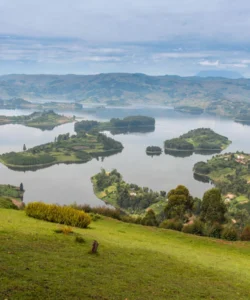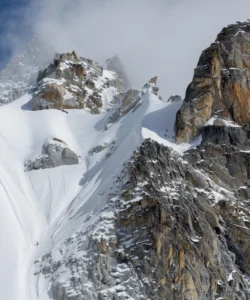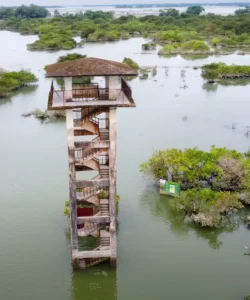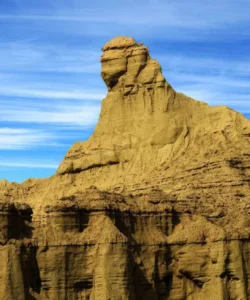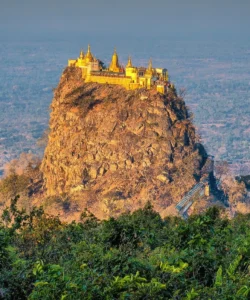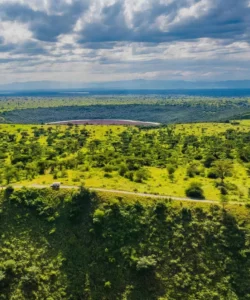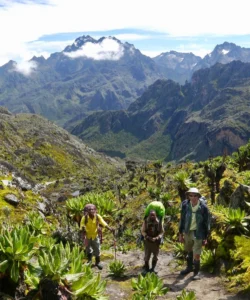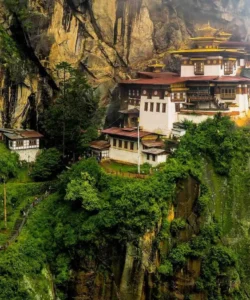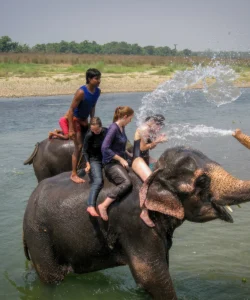Sajek Valley is a spectacular and increasingly popular natural wonder located in the remote Chittagong Hill Tracts of Bangladesh. Often dubbed the “Queen of Hills” and the “Roof of Rangamati,” it is renowned for its breathtaking panoramic views of rolling green mountains, dense forests, and its most iconic feature: the mesmerizing spectacle of clouds swirling below, creating an “ocean of clouds” effect.
Name: Sajek Valley (Bengali: সাজেক উপত্যকা)
Address: Sajek Union, Baghaichhari Upazila, Rangamati District, Chittagong Hill Tracts, Bangladesh. Although administratively part of the Rangamati District, it is more conveniently accessed via the Khagrachhari District due to better road connectivity. It is close to the Indian border state of Mizoram.
How to Get There:
Reaching Sajek Valley requires a multi-stage journey, often involving a special mode of transport and adherence to army escort schedules.
- By Air: The closest major airport is Shahjalal International Airport (DAC) in Dhaka. From Dhaka, you would travel by bus or private vehicle to Khagrachhari.
- From Dhaka to Khagrachhari:
- By Bus (Recommended): Numerous bus services (AC and non-AC) operate from Dhaka’s major bus terminals (e.g., Kolabagan, Sayedabad, Gabtoli) to Khagrachhari town. The journey takes approximately 7-8 hours.
- By Private Car/Taxi: Can be hired, offering more flexibility.
- From Khagrachhari to Sajek Valley:
- Chander Gari (4×4 Jeep): This is the most common and almost mandatory mode of transport for the hilly terrain. These customized jeeps are hired by groups and offer an adventurous ride through steep inclines and descents. The journey from Khagrachhari to Sajek takes approximately 2.5-3 hours.
- Motorbike/CNG: Can also be hired, but 4×4 jeeps are safer and more common for groups.
- Military Escort: To ensure safety in the remote Chittagong Hill Tracts, vehicles traveling to Sajek Valley must join a military escort (convoy). Escorts typically depart from Baghaihat Army Camp (or Dighinala Army Camp) at scheduled times (e.g., 10 AM and 3 PM). Missing the escort means you won’t be able to reach Sajek that day.
- Within Sajek Valley: The main tourist areas within Sajek (Ruilui Para, Konglak Para, helipad) are relatively walkable.
- Best Time to Visit: Sajek Valley is beautiful year-round, but the best time for “cloud viewing” is during and right after the monsoon (August to November), when clouds blanket the valley. The autumn-winter season (October to March) offers pleasant weather and clear skies, ideal for outdoor activities and spectacular sunrises/sunsets.
- Permits/Fees: While no specific entry permit for the valley itself, visitors need to register at army checkpoints.
Landscape and Architecture:
Sajek Valley’s “landscape” is a dramatic mountainous terrain of lush green hills and dense forests, and its “architecture” is primarily vernacular, adapted for tourism, but blending with the natural environment.
- Rolling Hills and Mountains: The valley is situated among the Kasalong range of mountains in the northern Chittagong Hill Tracts, characterized by endless rolling hills, steep inclines, and deep valleys. It sits at an elevation of around 1,800 feet (550 m) above sea level.
- “Ocean of Clouds”: The most iconic visual is the sea of clouds that often gathers in the valley below, especially in the early morning or during monsoon. From elevated points like Konglak Hill, the surrounding mountains appear to emerge like islands from a vast white cloud ocean.
- Dense Forests and Greenery: The valley is surrounded by dense tropical forests, lush greenery, and vast grasslands, particularly vibrant during and after the monsoon season.
- Small Rivers: Numerous small rivers and streams flow through the mountains, including the Sajek River (which forms part of the India-Bangladesh border) and the Kasalong River.
- Viewpoints: Prominent viewpoints include Konglak Hill (the highest point in Sajek, with a hike to its summit), and the helipad areas in Ruilui Para, which offer panoramic vistas of the mountains and clouds.
- Traditional Ethnic Villages: The valley is home to various indigenous ethnic minority groups, including the Lushai, Pankho, and Tripuri people. Their traditional villages (like Ruilui Para and Konglak Para) feature simple, charming houses, often made of bamboo and wood, blending into the hillside.
- Eco-Resorts and Cottages: Tourism has rapidly developed, leading to a proliferation of eco-resorts, guesthouses, and cottages, often built in a rustic, traditional style (using wood, bamboo, and tin roofs) that attempts to blend harmoniously with the natural surroundings. Many offer balconies with cloud or valley views.
What Makes It Famous:
- “Queen of Hills” and “Roof of Rangamati”: Sajek Valley is affectionately known by these titles, reflecting its unparalleled scenic beauty in the Chittagong Hill Tracts.
- Spectacular “Sea of Clouds”: Its most iconic fame comes from the mesmerizing phenomenon of the clouds swirling below and around the hills, creating an “ocean of clouds” effect, particularly at sunrise. This makes it a unique visual spectacle in Bangladesh.
- Breathtaking Sunrise and Sunset Views: The elevated location provides exceptional opportunities to witness dramatic sunrises over the distant hills and stunning sunsets, painting the sky in vibrant colors.
- Unique Cultural Immersion: It offers an authentic glimpse into the unique culture, traditions, and simple lifestyle of various indigenous ethnic communities (Chakma, Marma, Tripuri, Lushai, Pankho) who inhabit the valley.
- Adventure and Thrilling Journey: The challenging jeep ride (chander gari) through winding, steep hilly roads, often as part of a military-escorted convoy, is itself a significant part of the adventure and thrill.
- Rapid Development as a Tourist Spot: It has quickly emerged as one of Bangladesh’s most popular domestic tourist destinations, attracting thousands of visitors annually for its natural beauty and serene atmosphere.
Differences from Some Other Wonders:
- “Cloud Play” as Primary Feature: While many mountain valleys are scenic, Sajek’s fame is singularly tied to its exceptional “sea of clouds” phenomenon, where visitors experience clouds swirling below them, giving an otherworldly, “heaven on earth” feel. This is a very specific visual and atmospheric phenomenon that sets it apart from other generic mountain or valley destinations.
- Unique Access via Military Escort: The mandatory military escort system for all vehicles entering and leaving Sajek Valley is a very distinctive logistical and security feature not typically found in other tourist destinations or national parks. This reflects its remote location in a sensitive border region.
- Focus on Hill Tracts Indigenous Culture: While Bangladesh has other cultural sites, Sajek offers a very specific and accessible immersion into the culture of the ethnic minority groups of the Chittagong Hill Tracts, distinct from the Bengali-dominant culture of the plains.
- Relatively Young Tourism Destination: Compared to ancient historical sites (e.g., Somapura Mahavihara, Lalbagh Fort) or long-established natural wonders, Sajek Valley is a relatively new and rapidly developing tourist destination (tourism only started gaining pace in the 2010s). Its infrastructure is still evolving.
- No Iconic Single Monumental Architecture: Unlike sites famous for their specific grand architecture (e.g., Ahsan Manzil), Sajek’s “architecture” is primarily its natural hilly landscape and the rustic, eco-resort style buildings that blend with it.
- Less About Large Wildlife: While it has forests, its primary appeal isn’t “big game” wildlife viewing (like Sundarbans’ tigers or Jim Corbett). The focus is on the scenic beauty, clouds, and local culture.
- Accessibility from Khagrachhari: While located in Rangamati, its more convenient access route via Khagrachhari is a notable logistical quirk.
Sajek Valley Photos:



















